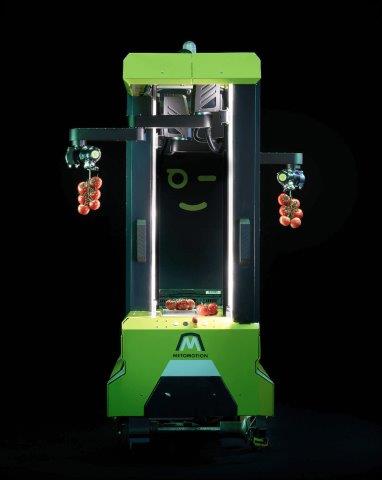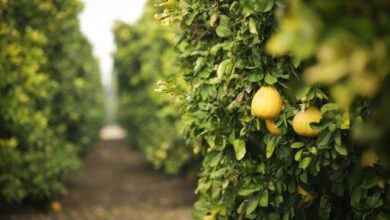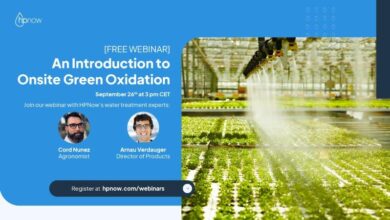Meet GRoW, the Israeli Robot Transforming Agricultural Greenhouses

Interview with Adi Nir, founder, and CEO of MetoMotion based in Yoqneam
MetoMotion, an Israeli startup that has developed an award-winning multipurpose robotic system to perform labor-intensive tasks in agricultural greenhouses.
Adi grew up in a kibbutz and studied engineering at the Technion. After spending 16 years in the aerospace and defense industries he decided to use his professional expertise to address challenges in agriculture including rising costs and labor shortages. In 2017 he founded MetoMotion which has raised $10 million.
Below is an interview between IsraelAgri and Adi Nir:
Tell me a bit about your background. What drew you to the field of agricultural robotics?
I was raised in Kibbutz Sarid, and I worked in agriculture from a young age. One could say about people raised on a kibbutz, that you can leave agriculture, but agriculture doesn’t leave you.
After a career in R&D working on some very interesting and cutting-edge technologies, I founded MetoMotion to tackle a problem that affects each of us directly – the global food crisis.
Despite all the advances in technology, agricultural tasks are primarily performed manually, and this model is not sustainable. In developed countries, young people do not want to work with their hands and the sector cannot pay sufficiently to attract enough local workers. The result is that many farmers are dependent on foreign labor. The problem is particularly acute in Israel where only 1% of workers are employed in agriculture.
Cost is another major problem, particularly as we are dealing with global inflationary pressures. Wages are rising and account for up to 50% of production costs. Another significant problem is that up to 20% of crops are spoiled or wasted during the production process, often the result of human error.
Agricultural robots can perform manually intensive harvesting tasks, thereby improving production output and ultimately lowering costs. Although it is too early for these cost savings to trickle down to the end customer, this is the long-term hope and goal.
Can you go into more detail about how the agriculture robot works?
Our robotic worker is called the Greenhouse Robotics Worker or GRoW and has three major capabilities.
First, with dual robotic arms, the robot picks the tomatoes on both sides of the greenhouse row with little human intervention. The robot is using artificial intelligence (AI) and is equipped with 3D vision capabilities so that it can select what to pick based on pre-determined criteria. For instance, if the grower needs a certain level of ripeness, GRoW can select and pick tomatoes based on ripeness settings.
The robot also has an onboard boxing system. Once the fruit is picked, it is placed in a conveyer and placed in standard industry boxes, working at a speed of 16 seconds per cluster.

You mentioned greenhouses. Does the robot operate in all types of greenhouses?
Our focus is on high-tech greenhouses that operate throughout the year. These are typically in countries where local weather is not suitable for outdoor farming, and with high-tech greenhouses, the climate, lighting, and humidity can all be controlled.
The high-tech greenhouses grow 90-100 kilograms (kg) of tomatoes per square meter a year. It’s much easier to introduce a robot into this environment without changing the infrastructure. Because they operate all year, they get immediate benefits from the 24 by 7 capability of the autonomous robot.
In what ways are you supporting digital transformation or smart farming?
We use AI to provide the grower with tools to align their commercial and operational goals to the output of the robot.
Information that is critical to the grower is captured and accessible from a dashboard where robot utilization is tracked. We give the grower visibility into the robot’s performance in the last week and what is planned for this and the following week.
If the grower must deliver produce at a specific level of ripeness, this can be programmed so that the robot picks the tomatoes that it has contracted to sell.
This allows the grower to be adaptive to market conditions and to optimize yield and profitability.
You have mentioned tomatoes, but can the robot pick other fruit?
Right now, tomatoes are the first crop that we are supporting because of the sheer size of the market. A third of the crops grown in greenhouses are tomatoes.
Our future plan is to expand to other crops including cucumbers, peppers, and eggplants. There is also a lot of interest that we have received from the cannabis industry, and this is something we intend to explore on our roadmap.
Can you please tell me about the commercial traction, and which markets you are selling to?
Our robots are now operating in Western Europe. We have a commercial agreement with Ridder in the Netherlands which is both a distributor and an investor in the company.
This year we signed a multi-robot commercial agreement with RedStar which is also in the Netherlands. This is the only customer that I am allowed to discuss publicly, and we hope to make more announcements this year.
I am also very encouraged by the market reception. Last year, we were awarded the GreenTech Robot Challenge and this year we won the bronze 2023 Sival Innovation award in France.




